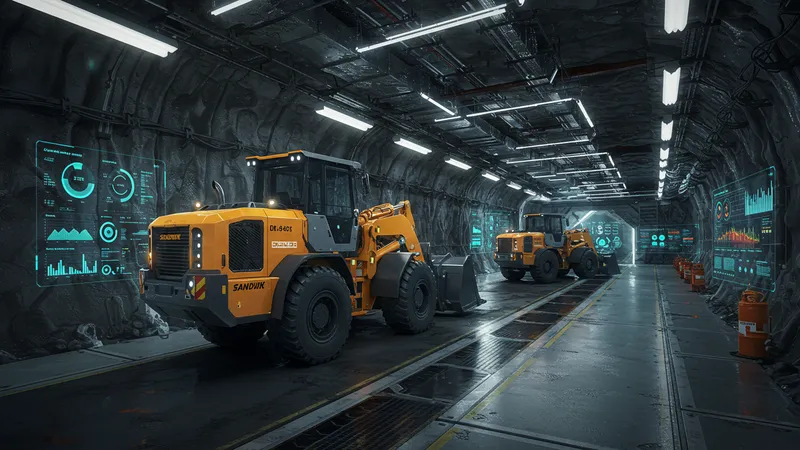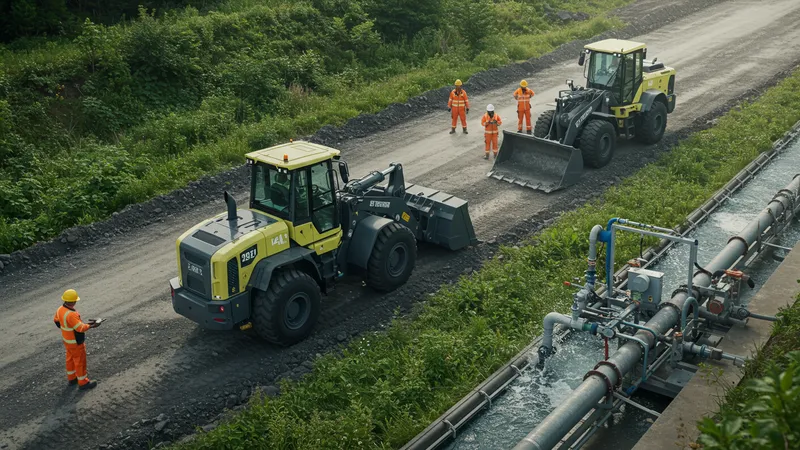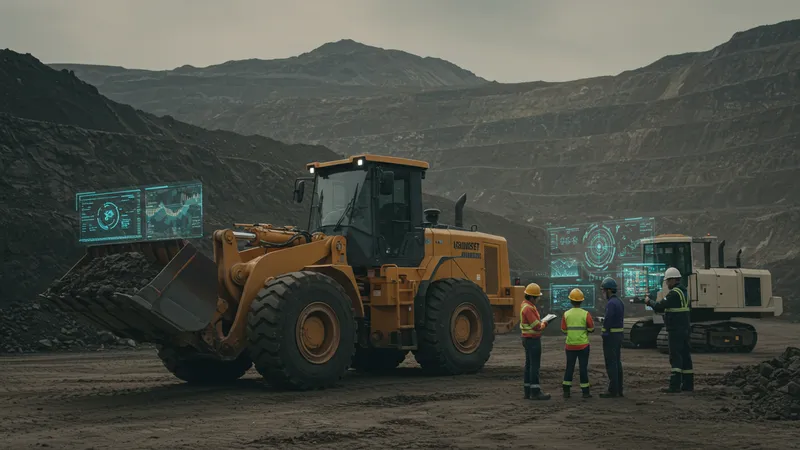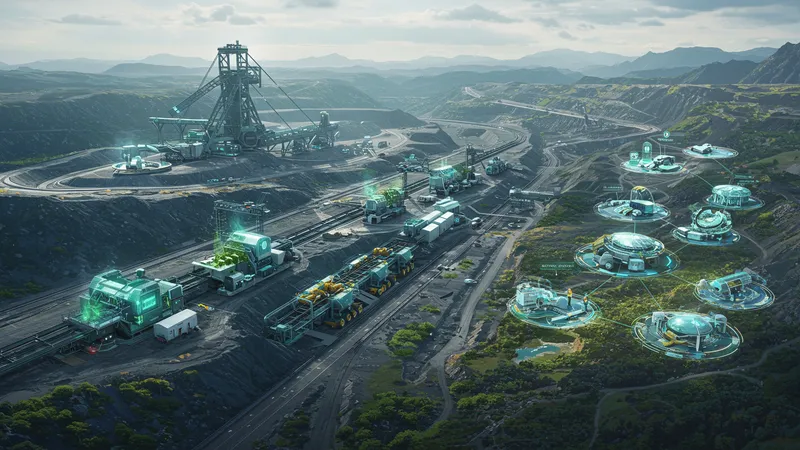

Mining plays a crucial role in supplying materials essential for modern technologies and infrastructure. However, traditional mining practices have frequently come at a steep environmental cost. Today, a transformative approach is emerging: integrating advanced efficiency techniques and eco-aware methods to extract minerals while minimizing environmental degradation. This shift isn’t just about complying with regulations—it’s about reengineering the industry for long-term sustainability, regulatory alignment, and environmental stewardship.
Eco-efficient mining aims to maximize mineral yield with the least environmental disturbance possible. It incorporates a mix of advanced equipment, digital monitoring, water recycling, responsible waste management, and low-emissions energy alternatives. By focusing on reducing resource consumption and emissions at every stage, these solutions pave the way for cleaner operations that remain economically viable. As pressure mounts from global regulations and consumer preferences, mines adopting such strategies find themselves at the forefront of progress.

Modern dewatering systems, like those from Weir Minerals, allow operations to drastically reduce water discharge and improve the rate of water recycling. This limits environmental impacts, especially in regions where water scarcity is a growing concern. These systems also collect tailings safely and facilitate compliant re-use of process water, an important step for regulatory approval in environmentally sensitive regions.
Switching to electric underground loaders, such as the solutions offered by Sandvik, represents a leap forward in emission reduction. In addition to improving air quality for mine workers, battery-driven machines help companies hit stricter guidelines on fuel consumption and greenhouse gas outputs. The reduced ventilation requirements can also mean cost savings and smaller carbon footprints for entire sites.
Data-driven decisions are central to eco-efficient mining. Platforms like Hexagon’s Smart Mining Analytics enable operators to monitor every stage of extraction and processing, in real-time, for both yield optimization and environmental compliance. By integrating satellite data, IoT sensors, and historical performance metrics, these tools help strike a balance between efficiency and impact mitigation.
These eco-focused technologies show measurable results: reduced freshwater use, better energy intensity scores, and improved stakeholder trust. Early adopters often find that sustainable mining isn’t just an ethical move—it also leads to better operational performance and a robust long-term license to operate in a rapidly changing world.
From water-smart tailings management to quiet, emissions-free loaders, the landscape of mining solutions is rapidly evolving. The deeper details reveal even more valuable insights ahead—particularly around how these tools drive continuous improvement and set new benchmarks in the sector...
New mining technologies are reshaping how companies balance yield and environmental responsibility. Automation and electrification lead the way, with electric underground loaders proving especially effective for reducing ventilation needs and direct carbon emissions within the mine. For example, Sandvik’s battery-powered loaders are demonstrating significant drops in energy usage, with reported reductions of up to 25% in operational emissions compared to diesel counterparts. These advances yield both cleaner sites and operational savings.

Data and analytics are equally vital. Software platforms like Hexagon’s Smart Mining Analytics collect granular information on water use, energy inputs, and mineral recovery rates. This real-time analysis enables dynamic adjustments, catching inefficiencies before they escalate. Advanced monitoring also supports precise compliance with modern environmental standards, making regulatory approvals smoother and community relations stronger.
Water reclamation is seeing strong innovation through sophisticated dewatering systems. Weir Minerals’ solutions, for instance, employ closed-loop circuits that recycle up to 90% of process water. In arid regions, this technology has helped mines transform from net consumers to near self-sustaining water users. Minimizing reliance on outside sources of water makes operations more resilient and marketable as green leaders within the resource industry.
Integration is accelerating: leading sites now combine electric vehicles, intelligent monitoring, and water reclamation. The combined result is often a significant improvement in both output and sustainability—showcasing that environmental care and productivity can coexist. As regulations and expectations increase, these integrated systems are paving the way toward a more viable and respected mining industry.
Deploying eco-efficient mining solutions delivers direct savings and competitive advantages. For mine operators, reducing water consumption through dewatering and reclamation yields ongoing cost reductions on resource acquisition and waste remediation. Sites adopting Weir Minerals’ systems, for example, frequently report lower long-term operational costs as recycled water minimizes both supply and disposal expenses.

The switch to battery-electric loaders brings dual benefits: operational efficiency improves, and emissions-related liabilities decrease. These loaders, like those from Sandvik, require less frequent maintenance—counting fewer moving parts and no diesel particulate filters. This extends the service interval, lowering labor costs, and reducing unplanned downtime. The energy cost per ton moved also drops, especially where electricity is cheaper or produced from renewable sources.
Adopting robust analytics impacts both yield and compliance. Deploying platforms such as Hexagon’s software improves resource recovery while reducing over-extraction and waste. Mines can achieve precise compliance with environmental regulations, avoiding litigation and potential fines. In jurisdictions with carbon pricing or water quotas, the economic incentive for efficient practices becomes a deciding factor for project feasibility.
Beyond the bottom line, sustainable practices bolster reputational value. Operators who publicize reductions in emissions and fresh water demand improve trust among investors, regulators, and neighboring communities. This social license can mean easier expansions, fewer operational interruptions, and smoother path toward future projects—a significant intangible benefit arising from eco-efficient mining investments.
While the benefits of eco-efficient mining are clear, implementing these solutions is not without obstacles. Upfront investments can be substantial, especially for advanced electric loaders and automated monitoring platforms. However, the total cost of ownership tends to decrease over time due to lower fuel, water, and maintenance expenses. Careful financial analysis and phased adoption can help mines manage these costs, avoiding major disruptions while progressing toward sustainability targets.

Workforce training is another key ingredient for successful integration. Employees must adapt to new equipment and data-centric work cultures. Many leading technology suppliers offer training alongside their advanced systems, ensuring a smooth transition and reducing operational risk. Organizations planning a rollout should prioritize robust onboarding processes to maximize return on investment.
Mining sites also face logistical barriers in adopting new infrastructure—particularly in remote or challenging locations. Battery charging stations for loaders, water recycling installations, and sensor networks all require careful engineering and planning. Site-specific solutions—fitting the unique geography and geology—are essential for seamless and efficient operation.
Best practices include starting with pilot projects, leveraging grant funding where available, and maintaining strong partnerships with technology vendors. Continual monitoring and feedback ensure that eco-efficiency measures are not only installed but optimized. The journey toward maximized yield and minimal impact is ongoing—and strategic implementation distinguishes industry leaders.
The mining sector’s evolution toward sustainability is poised to accelerate as technology matures and environmental regulations grow stricter. Developments like AI-powered mineral sorting and renewable-powered microgrids promise even greater reductions in both resource consumption and emissions. As early adopters continue to prove the viability of these innovations, sector-wide transformation appears inevitable.

Collaboration across companies becomes increasingly key as challenges grow in complexity. Working groups and knowledge-sharing networks focused on eco-efficient mining are gaining prominence, helping operators share best practices and co-develop solutions that suit different geological and operational contexts. Such alliances also enhance industry transparency, which is vital for stakeholder confidence and regulatory cooperation.
Regulatory incentives are likely to play a larger role in driving adoption. Governments in major mining countries are offering favorable frameworks or tax offsets for demonstrable reductions in water and energy consumption. This financial support helps de-risk investments into expensive new infrastructure and accelerates the deployment curve for sustainable mining technologies worldwide.
As public expectations around environmental stewardship intensify, the mining industry’s commitment to eco-efficiency will determine not just profitability, but its broader social legitimacy. The path forward is clear: Adaptation, innovation, and a steadfast focus on minimizing impact while maximizing yield will be the hallmarks of successful, future-ready mining companies.